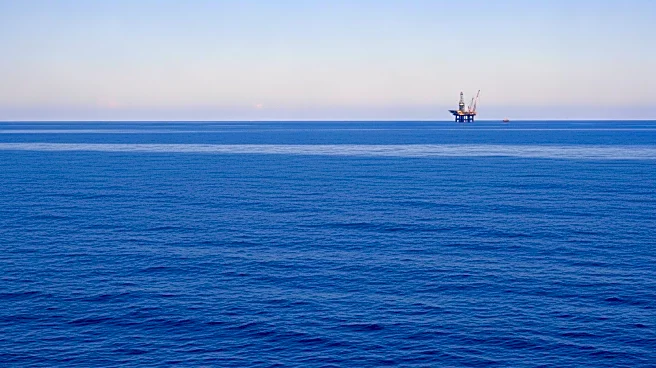What's Happening?
Suriname is emerging as a significant player in the Caribbean's offshore oil and gas sector, following multiple deepwater discoveries. The country has confirmed recoverable resources of 2.4 billion barrels
of oil equivalent and 12.5 trillion cubic feet of natural gas in the Guyana-Suriname basin. The Block 58 development, led by TotalEnergies and APA Corporation, is central to this growth, with the GranMorgu project expected to deliver first oil by 2028. This project represents the largest industrial investment in Suriname's history, featuring an all-electric FPSO for reduced emissions. Additional exploration activities are underway in Blocks 52 and 53, with Petronas and TotalEnergies making significant investments.
Why It's Important?
Suriname's advancements in offshore oil exploration could significantly impact the Caribbean's energy landscape, potentially positioning the country as a major contributor to regional oil and gas supply. The development of these resources is expected to boost Suriname's economy, attract international investment, and enhance energy security in the region. The focus on sustainable practices, such as reduced emissions, aligns with global environmental goals, potentially setting a precedent for future projects in the area.
What's Next?
Suriname is expected to continue its exploration and appraisal activities, with plans to drill at least ten new wells offshore between 2025 and 2027. The country's coordinated exploration efforts and strategic partnerships are likely to lead to sustained production growth, with projections of producing over 200,000 barrels per day by the end of the decade. This growth could further solidify Suriname's role as a key player in the Caribbean's energy sector.
Beyond the Headlines
The development of Suriname's offshore oil resources raises questions about the environmental impact and the balance between economic growth and sustainability. The use of all-electric FPSOs and the commitment to zero routine flaring are steps towards minimizing environmental harm, but ongoing monitoring and regulation will be crucial to ensure these practices are maintained.














